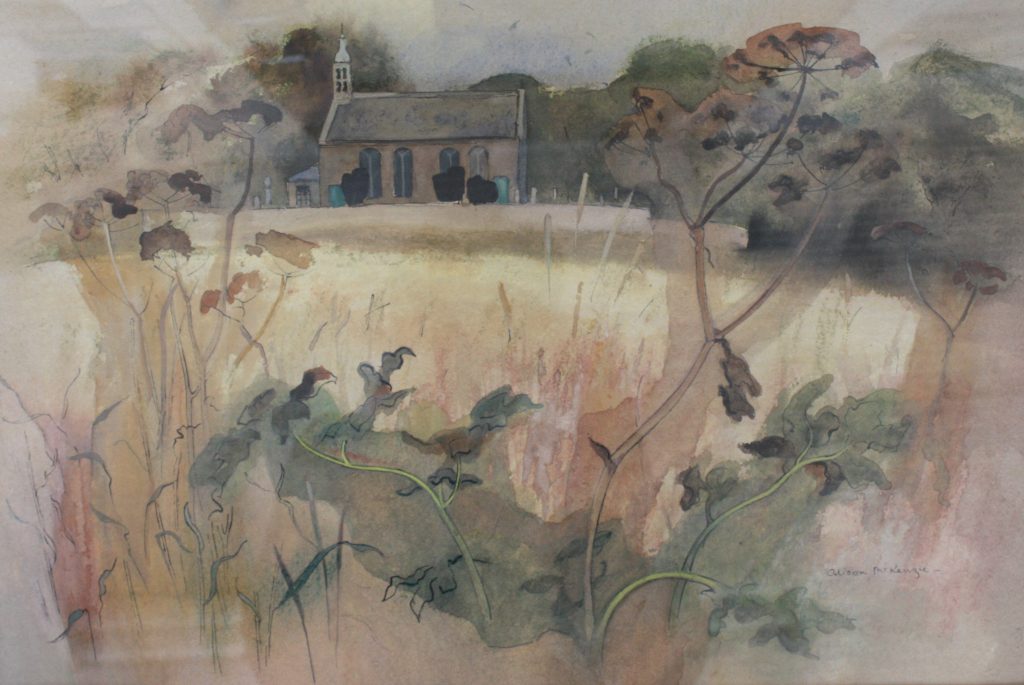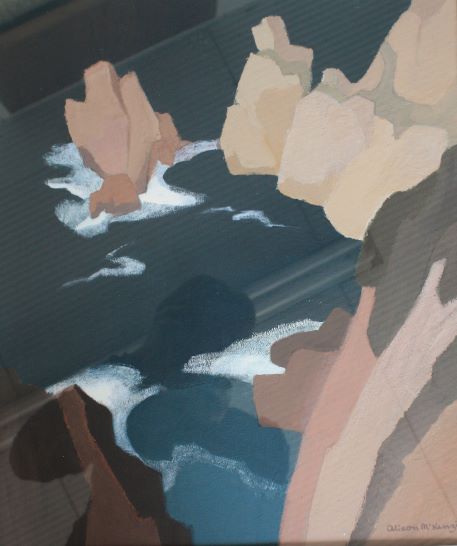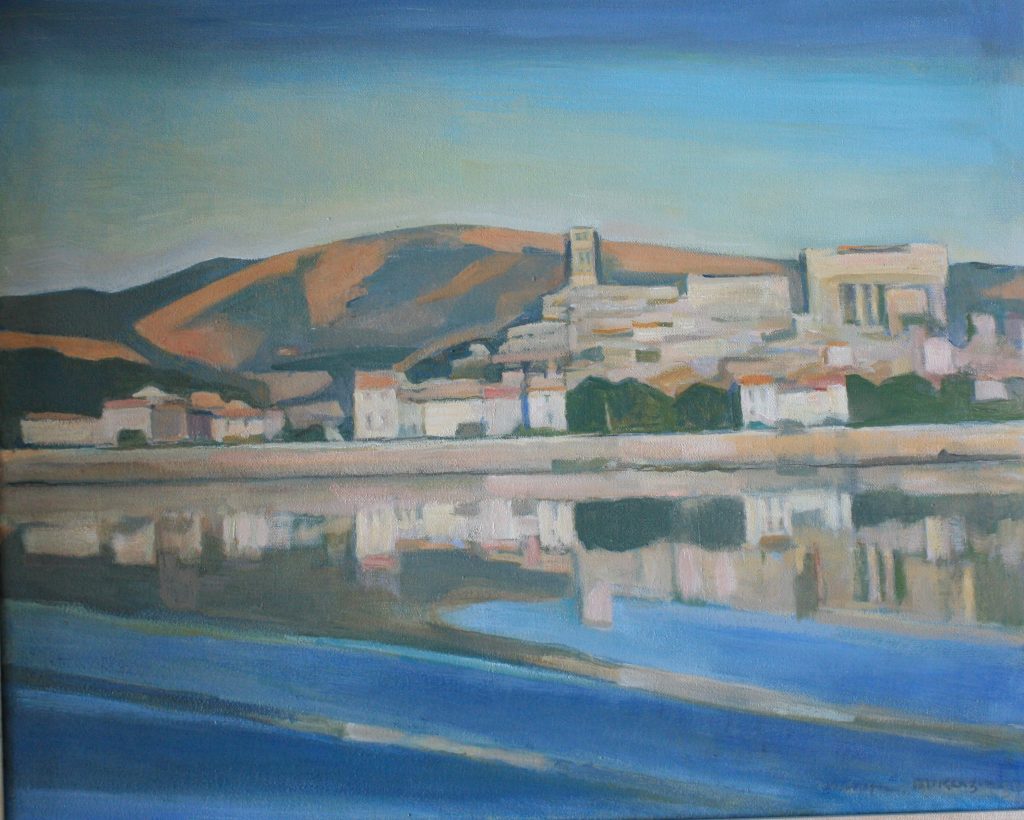After the Pathfoot Building was shut in late March, the Art Collection began to produce several blog posts every week, which aimed at providing a broader and deeper insight into our collections, and into the history of the University. Now that lockdown is starting to ease, we will be turning this into one regular weekly blog slot – the new ‘Friday Art Blog’ – and we look forward to your continued company over the next weeks and months. Remember that you can now search our entire collection here.

(Oil on canvas, 1984)
This week we are looking at the paintings of the McKenzie sisters in the Collection.
In 2015, the Art Collection received an unexpected letter from a solicitor in St Andrew’s stating that the late Sydney Aylwin Clark had bequeathed five pictures to the Collection. As it turned out, these paintings were by two sisters called McKenzie – Winifred (1905-2001) and Alison (1907-1982) – and Aylwin Clark (as she was known) had been their friend and biographer.
No explanation was given as to why these works were to come to Stirling, but apparently Ms Clark had decided that the Art Collection would be a worthy recipient.

(Watercolour on paper, 1953)
In 1990 Sydney Aylwin Clark had written a biography about her friends entitled ‘The McKenzie Sisters: The Lives and Art of Winifred and Alison McKenzie’ with a foreword by David McClure, and this provides a fascinating account of their joint lives.
Winifred and Alison McKenzie were born in the first decade of the 20th Century in Bombay, where their father worked in the family sawmill business (though he had originally trained as an architect at Glasgow School of Art in the 1880s, where he was a contemporary and friend of Charles Rennie Mackintosh). The family moved back to Scotland when the girls were still young and in 1923 Winifred enrolled in Drawing & Painting classes at Glasgow School of Art, where the lecturer Chica MacNab introduced her to the art of woodcuts. Alison followed shortly after and became one of the leading students in Design & Textiles. They completed their art training together at the Grosvenor School of Modern Art in London. While living in the capital in the 1930s, Winifred was elected a member of the National Society of Painters, Sculptors, and Engravers, and she was also a member of the Society of Wood Engravers.

(Acrylic on board, 1976)
In 1940 the family moved back to Scotland, to live in St Andrews, where they joined the artist Annabel Kidston in running a series of art classes for the allied forces stationed in the town during the war. Run under the auspices of the Committee for Education for the Forces, the classes proved extremely popular, particularly with the Polish soldiers, whose work was exhibited in 1944 at the National Gallery in Edinburgh
Winifred joined the staff of Dundee College of Art in 1944, to teach wood engraving and composition. Alison joined her two years later on a job-share basis when their mother fell ill. They were popular and successful teachers, but their mother’s declining health forced them to resign from the College in 1957, to care for her full-time. The wood engraving course was taken over by Jozef Sekalski, another Polish artist who twice escaped from Nazi imprisonment during his attempts to reach Britain.
“The two McKenzie sisters have lived close together throughout their lives, and as engravers each has a remarkable quality though in matters of individuality they are surprisingly different. The handling of light in Winifred’s engraving is the flood source, breaking through the arboreal colander. Her engraving technique is that of the painter. Alison’s handling of light is the beam source, illuminating a world of solids, a sculptural concept expressing solidity, security and order. Her engraving is remarkable for its economy and precision.”
– A History of British Wood Engraving by Albert Garrett 1978

(Oil on canvas)
The above painting is probably this one, referred to in Aylwin Clark’s biography:
‘From Ovronnaz [Rhone Valley, Switzerland] they walked up the valley as the sun came out, which provided Winifred with a dramatic image, made up of retreating storm clouds, grey glacier, varied light on the different planes of the mountain sides and in the foreground, green fields and a clump of trees, brilliantly illuminated. She worked it up later in their St Andrews studio – a perfect example of ’emotion recollected in tranquility'”
‘The McKenzie Sisters’ by Sydney Aylwin Clark, page 108

(Oil on canvas, 1992)
Aylwin Clark in her book describes how Winifred, in old age, enjoyed trips abroad, discovering France with the Friends of the RSA: ‘Looking from her cabin, she was thrilled with the light on Chateauneuf-du-Pape, with the brilliant blue of the bow wave in the foreground’.